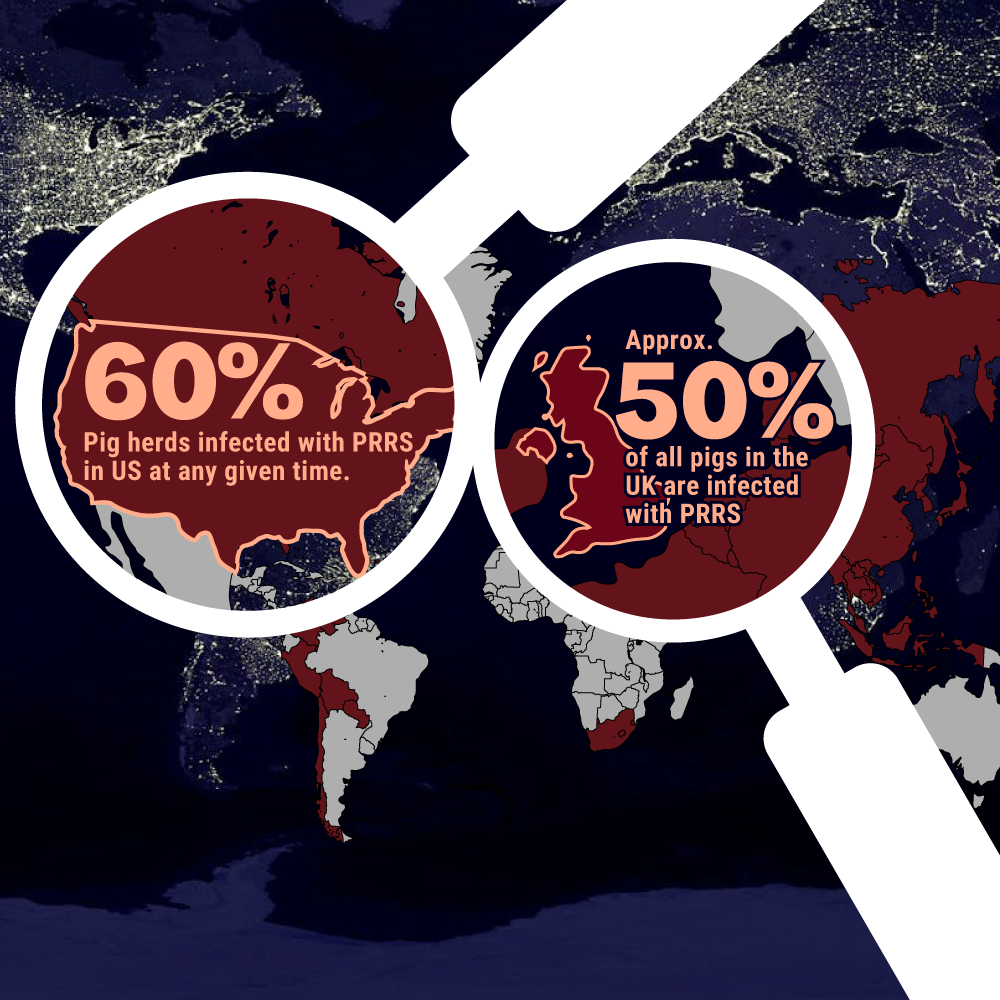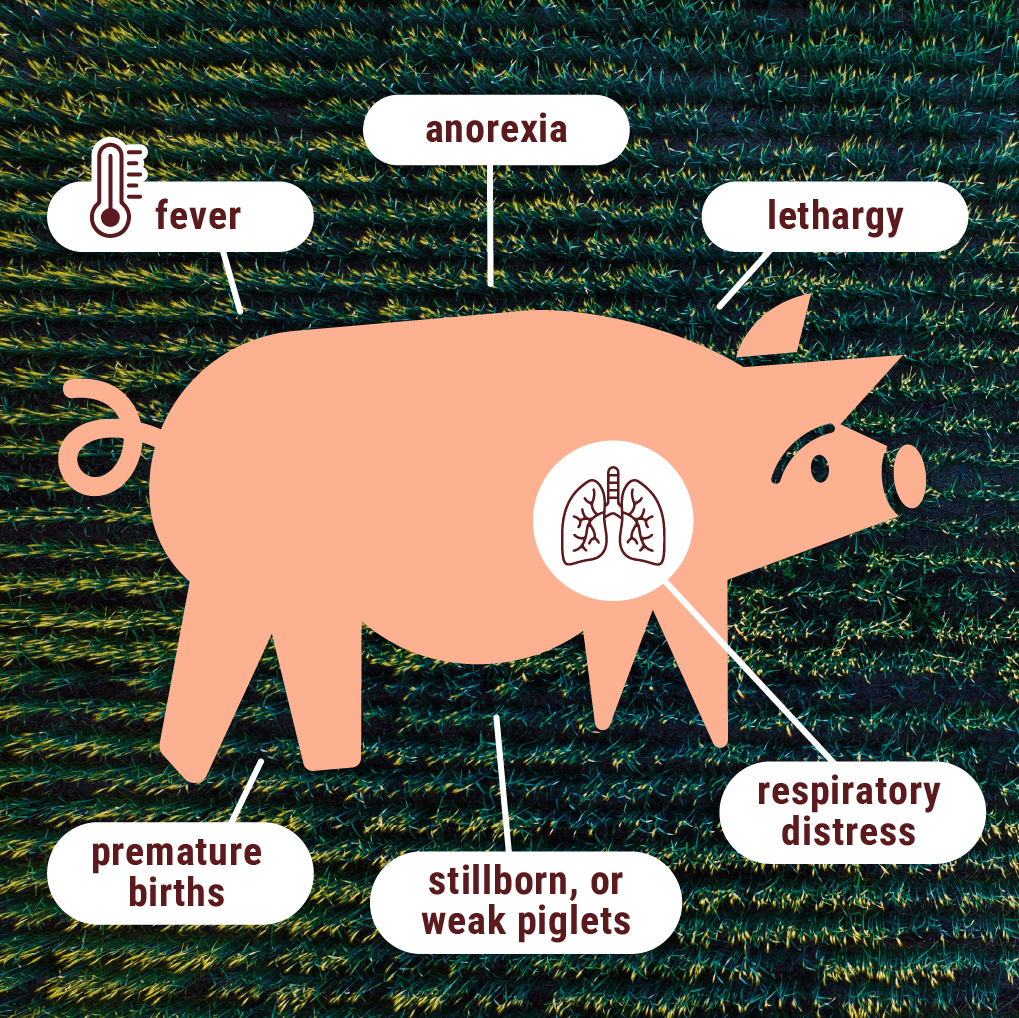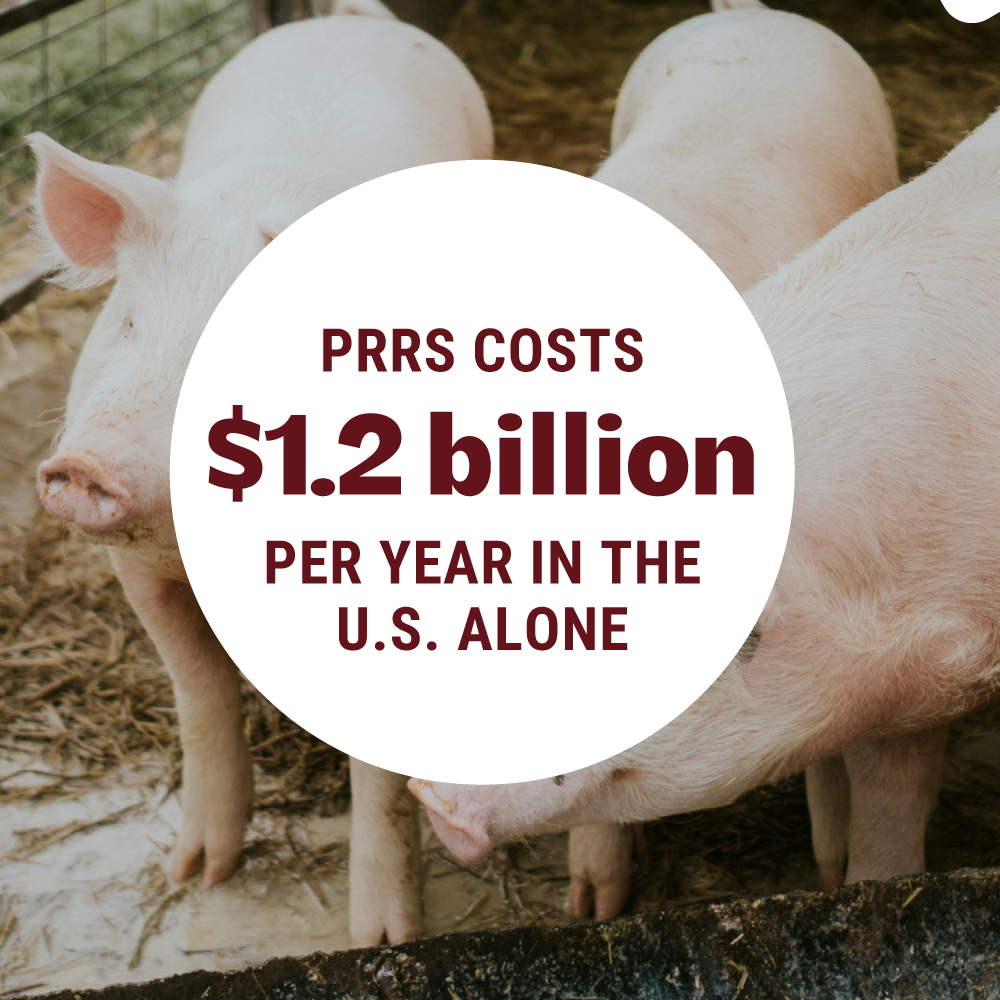But PRRS is a dynamic, often fatal virus that evades vaccines and infects millions of pigs around the world. It’s a devastating disease that impacts farms of all sizes, scales and types around the world. For example, in the U.S., 60% of pig herds are infected with PRRS at any given time – regardless of the size of the farm. In the UK, approximately 50% of all pigs are infected with PRRS. View Source
Pigs infected with PRRS experience needless suffering, including breathing problems, fever, inability to eat, weak piglets and even death. PRRS also suppresses pigs’ immune systems, making it easy to develop other infections, just like when humans catch a cold and it turns into pneumonia.


A recent study from Iowa State University reported that PRRS costs $1.2 billion per year, in the U.S. alone. That number has increased 80% from previous estimates of $664 million between 2006 – 2010 and $560 million between 2000 and 2005. In the UK, PRRS costs the industry £52 million per year, and in Japan, PRRS costs $280 million per year.
The growing cost of PRRS impacts everyone – from farmers to consumers.

PRRS was first identified in the mid-1980s, and despite increased biosecurity on farms, vaccines and antibiotic use, the problem has only grown. It’s clear that we are in need of a solution so that pigs live healthier lives.
For the first time ever, we have a solution to a devastating problem.
Without the binding site, pigs can be resistant to the disease, which could lead to improved health and welfare.
"I've been doing this for going on 30 years now, and more than half a dozen times in my career we've thought we had things figured out and were on top of it. But this virus always finds a way. What gives me hope is that we seem to be coming up with new and novel approaches to managing disease on both the human and animal side. Emerging technologies are potential gamechangers for solving PRRS."
Dr. Derald Holtkamp, professor of veterinary diagnostic and production animal medicine, Iowa State University